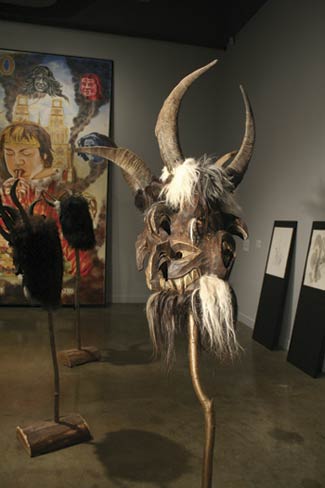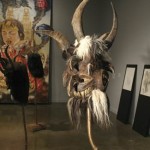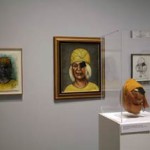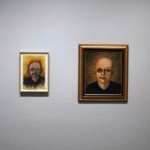By JAMES NADEAU
“Subculture tends to be presented as an independent organism functioning outside the larger social, political and economic contexts. As a result, the picture of subculture is often incomplete.”
It has become a signature of contemporary artists to obliterate the divide between high and low culture. The act of mining “low” and pop culture (although clichéd) serves to illustrate just how illusory these differentiations are. “High” and “low” are purely cultural constructions. It is a belief in an inherent aesthetic difference between one art form that rises and uplifts the soul and spirit and one that simply “is.” Contemporary artists are doing their best to demonstrate the mutability of these distinctions with various degrees of success.
From Takashi Murakami’s merging of pop culture and high art to Chloe Piene’s videos of heavy metal bands, artists have consistently moved cultural objects from low to high. This is nothing new, think Duchamp’s Fountain circa 1917. The difference is the extreme splintering of cultural production as it exists today. Globalisation and media technology have expanded the possibilities and variety of cultural groups along with the media that represents them. In this sense the whole world and global culture is there for the taking and re-interpreting.
Cameron Jamie is an artist whose fascination with fringe cultures leads him to create work that blurs and transcends these notions of who makes art –even what constitutes it. Jamie’s show at the List Center at MIT perfectly illustrates the difficulties of examining and presenting work that in another context would be more anthropological in nature, making the show both a success and a failure.
The exhibition, organized by Philippe Vergne, of the Walker Art Center, consists of selected artwork from the years 1983 to 2006. It is a collection of paintings, photographs, video and sculpture that “examines various social rituals in European and American culture.” Jamie casts his artistic net into (sub)urban cultures of wrestling, Halloween celebrations, and gothic music fans (with a couple other excursions thrown into the mix). Much of the work was done in collaboration with his subjects. As a result the show feels more like a compilation of several artists rather than just one. Because it is so varied, Jamie’s concept gets buried in the mish-mash of high-low, a series of one-liners that fail to illustrate the depth evident in his love of his subject matter. Unfortunately, if you aren’t focused on Jamie’s conceptual investigation when walking through the space, you find yourself wondering what the hell is going on.
For example, Untitled (Eight Portraits) (1992-1994) is a series of portraits made by other artists. It is a play on the children’s game “telephone” where a portrait of the artist holding a plastic Bart Simpson doll is passed along to seven other artists to reinterpret. The images shift significantly from one painting to the next. From the seventh to the eight painting a brush stroke becomes the face of a child. This results in the final painting being a family portrait of a mother, father and child. This same technique is used in two other piecesUntitled Portrait (Hand) from 1990-1993 and Untitled Portrait (Coconut Head) (1988-1992). All three follow the same methodology of an image transforming as it moves from one artist to the next. Interesting as they serve as examples of Jamie’s own artistic re-working of the cultural work of others that is evident is much of the exhibition, but ultimately it comes across as more of an amusing exercise than an investigation into the nature of seeing and re-imagining.
It is Jamie’s exploration of the world of wrestling that provides the bulk of the work at the List. He approached this from two perspectives. The first is a documentation of Jamie “performing” wrestling. In The New Life he is videotaped wrestling a Michael Jackson impersonator while dressed in long underwear and wearing a mask. This proves to be one of the more humorous videos in the exhibition. It is a great piece with a fake wrestler performing a fake act (wrestling) with a fake character. It is the ultimate cultural charade. It is Benjamin’s essay on wrestling by way of Derrida’s refusal of the real. It is a wonderful piece that seems misplaced. The monitor sits on the floor and faces a carpeted corner, its back to the gallery disavowing any relationship with the work that precedes it. It is a shame that the video doesn’t go beyond its simple documentation style as it has the potential of reaching Paul McCarthy-esque proportions.
Also nice is his investigation of the Krampus tradition in Germanic Europe. The Krampus is a figure who accompanied Father Christmas (Saint Nicholas) and was thought to be his servant or helper. It is the Krampus who punishes children who have been bad. Naughty children were given a stick instead of gifts and threatened to be beaten (with said stick) if they did not behave. He is represented by the wearing of rags and large horned masks. Jamie drew up a series of mask designs and had them constructed by an Austrian master woodcarver named Max Koessler. The masks, mounted on sticks in the gallery with their original drawings nearby, exude such a sense of malevolence and terror that it is difficult to image them as part of a Christmas ritual. In that regard the masks provide a link with the innate human desire to illustrate and interact with the gothic. They prove a perfect compliment to Jamie’s exploration of Gothic culture in Los Angeles. His collages of Gothic personal ads alongside several photographs of “Goth” types are included. Unfortunately his foray into Gothic culture is all too brief, the photos looking like out-takes from an Anne Rice convention with no real context.
Ultimately the failure of the show is due to both its breadth and lack of depth. It is simply too big for what is an intimate, highly conceptual form of art making. The act of examining these cultures from both within and without leaves an underlying sense of mocking, the muddled idea that there is something wrong with these people. There is nothing uplifting or even unifying here. Jamie doesn’t ask the viewer to think about ritual or fetish cultures, rather he offers up their artifacts and lets us laugh or walk away. The show rarely escapes its anthropological nature. Those who practice and immerse themselves into these cultural spheres do so out of a longing for something that the mainstream doesn’t supply. Like Clifford Geertz’ forays into Balinese cockfighting Jamie’s practice of collecting and re-configuring doesn’t allow for the desires of those he observes to make themselves present. It stands as a day trip into other cultures as a means for making art.
- Cameron Jamie, Kranky Masks, fur, wood, animal horns, 2004. Carved and fabricated by Max Koessler, Bad Hofgastein, Austria.
- Cameron Jamie, Untitled Portrait (Coconut Head), carved coconut object, pastel on paper, oil on canvas, charcoal on paper, 1988-1992.
- Cameron Jamie, Untitled Portrait (Hand), color photocopy, pastel on paper, oil on canvas, charcoal on paper, 1990-1993.
"Cameron Jamie" is on view May 5 - July 8, 2007 at The List Visual Arts Center at MIT.
All images are courtesy of the artist and The List.
Photos by Mark Linga.







